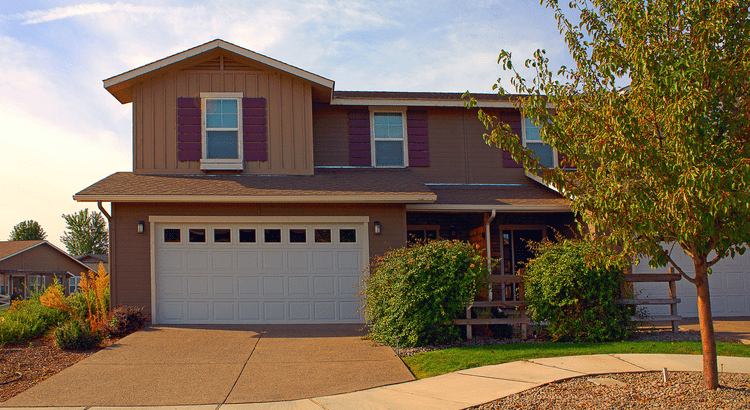
Why Today’s Mortgage Debt Isn’t a Sign of a Housing Market Crash
Why Today’s Mortgage Debt Isn’t a Sign of a Housing Market Crash One major reason a foreclosure crisis isn’t looming is the substantial equity homeowners have today. Unlike the last housing bubble, where many owed more than their homes were worth, today’s homeowners hold significantly more equity than debt. That’s why, even though mortgage debt has reached an all-time high, this isn’t a repeat of 2008. As Bill McBride, Housing Analyst for Calculated Risk, explains: “With the recent house price increases, some people are worried about a new housing bubble – but mortgage debt isn’t a concern . . .” Today’s homeowners are in a much stronger financial position than ever before. Let’s break it down to understand why today’s mortgage debt isn’t cause for concern. More Equity, Less Risk of Foreclosures The St. Louis Fed reports that total homeowner equity is nearly three times the total mortgage debt today, highlighting the strong financial position of homeowners (see graph below): High equity significantly reduces the chances of foreclosure for homeowners. If financial challenges arise, they can often sell their property and still benefit from the equity they've accumulated. Even in the case of a potential dip in home values, most homeowners today have enough equity to provide a financial cushion. This situation is vastly different from the 2008 crisis, where many homeowners owed more on their mortgages than their homes were worth, leaving them with limited options to prevent foreclosure. Delinquency Rates Are Still Near Historic Lows Another reassuring sign is that, according to the NY Fed, mortgage delinquencies—specifically payments that are over 90 days late—remain near historic lows (see graph below). This stability highlights the strong financial position of homeowners today and reinforces why the current market conditions are significantly different from those during the 2008 housing crisis. This is largely due to various programs aimed at assisting homeowners during temporary financial challenges. Marina Walsh, Vice President of Industry Analysis at the Mortgage Bankers Association (MBA), explains that these relief options, offered by both government and private sectors, have been instrumental in maintaining low foreclosure rates even during tough economic times. “. . . servicers are helping at-risk homeowners avoid foreclosures through loan workout options that can mitigate temporary distress.” This means that even if homeowners experience payment difficulties, there are support systems available to help them steer clear of foreclosure. Low Unemployment Helps Keep the Market Stable Another key element is the current low unemployment rate. With more people in stable jobs, homeowners are in a better position to manage their mortgage payments. As Archana Pradhan, Principal Economist at CoreLogic, puts it: “Low unemployment numbers have helped reduce the overall delinquency rate . . .” During the previous housing crisis, unemployment rates were much higher, contributing to a surge in foreclosures. However, today’s unemployment rate is significantly lower, as shown in the graph below: This stability in employment is one of the key reasons the market today doesn’t face the same risks it did during the 2008 crisis. Unlike the last downturn, we aren’t likely to see a wave of distressed sales. Most homeowners now have steady jobs and low-interest mortgages they can manage, making it easier for them to keep up with their payments. As McBride puts it: “The bottom line is there will not be a huge wave of distressed sales as happened following the housing bubble.” Bottom Line Although mortgage debt is at a high point, there's no need to fear another market crash. In fact, most homeowners are in a solid financial position. If you have any questions or concerns, feel free to reach out so we can discuss.

The Big Difference Between Renter and Homeowner Net Worth
The Big Difference Between Renter and Homeowner Net Worth If you’re deciding between renting and buying, remember the wealth-building advantage of homeownership. Homeowners build equity through mortgage payments and rising property values, which is why their net worth is, on average, nearly 40 times greater than renters. Let’s connect to discuss the financial benefits of owning a home and explore programs that can help make your dream of buying a reality.

Should You Sell Your House or Rent It Out?
Should You Sell Your House or Rent It Out? When you're preparing to move, deciding what to do with your current house is a big choice. More homeowners today are considering renting out their property rather than selling it. Recent data from Zillow reveals that about 66% of sellers thought about renting before listing their homes, with nearly 28% seriously considering it. This is up from 2021, when only 47% of homeowners thought about renting as an option. This shift shows that renting is becoming a more popular consideration. So, should you sell your home to fund your next one, or keep it as a rental to build long-term wealth? Let’s go over some key questions to help you find the right approach for your financial and lifestyle goals. Is Your House a Good Fit for Renting? Before making a decision, it’s essential to assess whether your property would work well as a rental. For example, if you’re relocating to a distant area, handling maintenance from afar could be a significant challenge. Additionally, consider whether your neighborhood is suited for rental demand and if your home requires any major repairs to be tenant-ready. If any of these factors apply, selling might be the simpler and more practical option. Are You Ready for the Realities of Being a Landlord? Managing a rental property goes beyond just collecting rent each month—it requires a considerable commitment of time and effort. You might receive maintenance requests at any time or need to address property damage before new tenants move in. Plus, there's always the possibility of missed rent payments or lease violations, which can bring unexpected stress and financial strain. As Redfin highlights: “Landlords have to fix things like broken pipes, defunct HVAC systems, and structural damage, among other essential repairs. If you don't have a few thousand dollars on hand to take care of these repairs, you could end up in a bind.” Do You Understand the Costs? If your main reason for renting is to generate passive income, it’s important to be aware of additional costs that may arise. As outlined by Bankrate: Mortgage and Property Taxes: You still need to pay these expenses, even if the rent doesn’t cover all of it. Insurance: Landlord insurance typically costs about 25% more than regular home insurance, and it’s necessary to cover damages and injuries. Maintenance and Repairs: Plan to spend at least 1% of the home’s value annually, more if the house is older. Finding a Tenant: This involves advertising costs and potentially paying for background checks. Vacancies: If the property sits empty between tenants, you’ll lose rental income and have to cover the cost of the mortgage until you find a new tenant. Management and HOA Fees: A property manager can ease the burden, but typically charges about 10% of the rent. HOA fees are an additional cost too, if applicable. Bottom Line Ultimately, deciding whether to sell or rent out your home is a personal choice. Let’s connect so you can feel confident and well-informed as you weigh your options with the guidance of a real estate professional.

More Homes, Slower Price Growth – What It Means for You as a Buyer
More Homes, Slower Price Growth – What It Means for You as a Buyer Right now, there are more homes available on the market than we've seen in years—and that could make a big difference if you’re ready to buy. Here are two key reasons why. You Have More Options To Choose From According to a recent Realtor.com article, the number of homes for sale has increased significantly this year. “There were 29.2% more homes actively for sale on a typical day in October compared with the same time in 2023, marking the twelfth consecutive month of annual inventory growth and the highest count since December 2019.” Although inventory levels haven’t fully returned to pre-pandemic levels, the increase in available homes is certainly a step in the right direction. (see graph below): With the rise in inventory, buyers now have a broader selection, allowing for greater flexibility to find a home that meets their needs, says Hannah Jones, Senior Economic Research Analyst at Realtor.com: “Though still lower than pre-pandemic, burgeoning home supply means buyers have more options . . .” This gives you a stronger chance of finding a home that truly fits your needs. Plus, with more choices available, the buying process may feel less pressured, as increased inventory often means less competition from other buyers. Home Price Growth Is Slowing When inventory is low, buyers often face intense competition for the limited homes available, which was a key factor in driving prices up quickly in recent years. However, with more homes now entering the market, price growth is starting to moderate. (see graph below): In some areas, the housing supply has not only returned to typical levels but even exceeds what we saw before the pandemic. This increase in available homes is leading to a noticeable slowdown, and in some cases, a complete pause in price growth. “Generally speaking, housing markets where active inventory has returned to pre-pandemic 2019 levels have seen home price growth soften or even decline outright from their 2022 peak.” A slowdown or pause in price growth can open up more affordable options, increasing the likelihood of finding a home within your budget. Dr. Anju Vajja, Deputy Director at the Federal Housing Finance Agency (FHFA), notes that: “For the third consecutive month U.S. house prices showed little movement . . . relatively flat house prices may improve housing affordability.” But remember, inventory levels and home prices are going to vary by market. That’s why working with a real estate agent familiar with your local market is such a valuable asset. Their insights into neighborhood trends can make all the difference in finding a home that aligns with both your needs and budget. Bottom Line With more homes available and a slower pace of price growth, you have a greater opportunity to find a home that suits your lifestyle and budget. Don’t hesitate to reach out if you’re interested in exploring the options currently available to you.
Categories
Recent Posts










